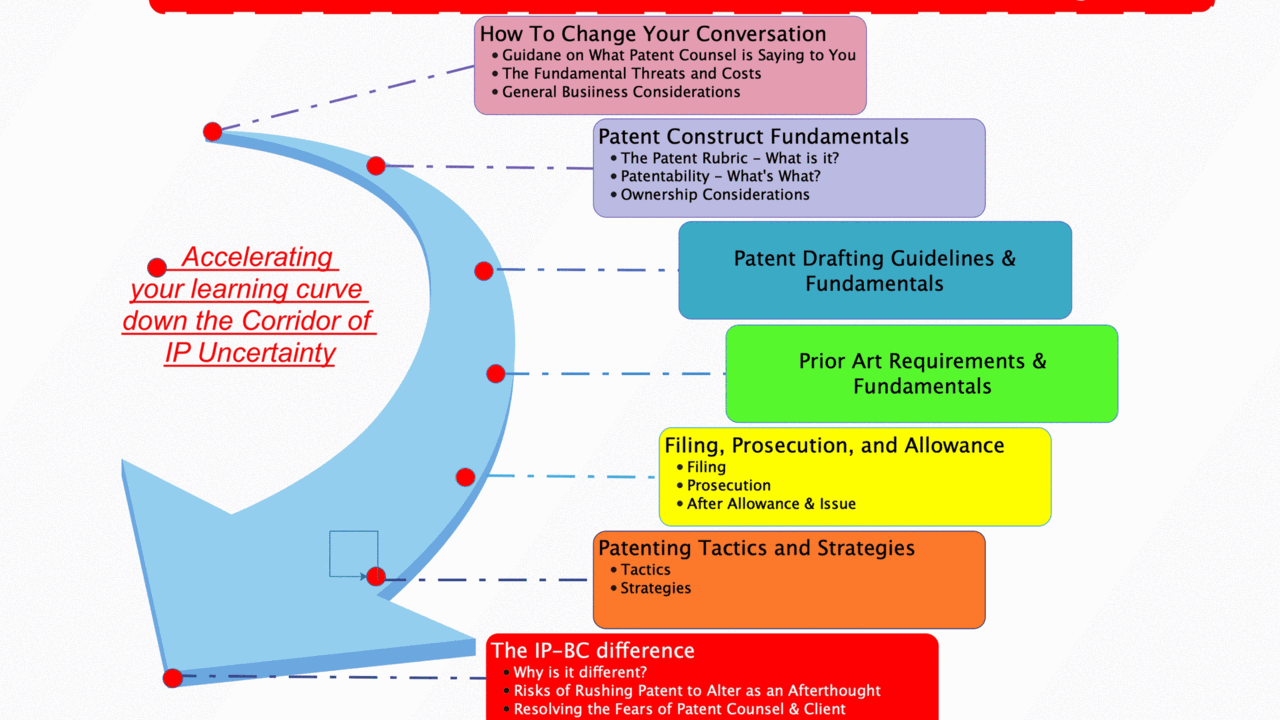Original Misconceptions: 2. Hand over an Invention Disclosure instead of a Schwartz Method Utility Compliant Disclosure (UCD)

When engaging outside counsel to assist you in the process of preparing and filing a patent, you will always be asked to submit an invention disclosure document as part of the work flow. Often, you will be asked for this "early" as possible in the counsel's project plan since this is the basis for the drafting of a preliminary patent application. The invention disclosure will elicit an array of content components starting with the title of your invention, the inventors, the background and field of art, and so forth. It all seems perfectly logical...how can you ask counsel to work on a patent draft if you don't give them "the goods".
That said, it is a common misconception that you MUST give them the invention disclosure EARLY. In fact, if you have a proper internal utility patenting workflow, not only will you be keeping your invention as a trade secret until the time you choose, but you will also be developing an internal form of invention disclosure as part of your product development lifecycle.
If you are wondering how, then the IP SAVVYS book and the IP-BC course will guide you in using The Schwartz Method (TSM) and the Big Bang Theory of IP Capitalization (BBT) to ensure that you have a patent rubric compliant disclosure when you are ready to ask counsel to work on perfecting the claims and the final draft of your patent filing.
Think about what I just proposed...if you know what a patent application must look like to be examined on merit, AND you understand that the translation of your idea into such a formal legal paper is the LAST STEP in the process, then you will realize that the creation of a patent rubric compliant communication with counsel will take a much different form than their invention disclosure. In fact, the order of creating a semantically correct invention disclosure follows a trajectory of creation that is the OPPOSITE of the steps of translating it into a patent draft (sections 1-6 of a formal patent application). This is NOT DOUBLE TALK:).
When you see, understand, and iteratively apply the Invention Disclosure Patent Application Workbook (IDPAW) entries during product development, you are forming an "invention disclosure" that not only maps directly to your latest and greatest preferred-embodiment (PE), but when the iterative cycle "ends" i.e. it quiesces and there are no more changes to it, you have an invention disclosure that is de-risked for fatal office action rejections if its properly translated into the patent draft by counsel.
Once you and your team understand this, learn the universal patenting language (UP), and guiding principles (GP) of The Schwartz Method (TSM), AND insist that your patent counsel does the same-yes-that they certify in TSM so that you and they can speak the same language about the invention, the disclosure, the drafting and the final approval for filing, then you will be first to file, get it right the first time, be de-risked for fatals, and you will also not have disclosed your trade secret invention before its time.
Another major benefit of WAITING to give an invention disclosure as a Utility Compliant Disclosure (UCD) that conforms and complies with the IDPAW framework, is that when you review the FINAL CLAIMS you intend to submit, not only will you understand their scope but you will also be in a position to handle patent office objections (there will be objections) in such a way that the PROSECUTION doesn't go into an aby$$ of unexpected expenditures. These unplanned spends can triple your total patent outlay, while diluting your patent value with exposed weaknesses. Each time you have an objection, if you have overreached or you have unaligned scope that requires amendments, not only might you loose your priority filing date, all of these "flaws" will publish in a public documents as the file wrapper (FW), accompanying any allowed and issued patent you get...FOR ALL TO SEE AND ATTACK.
When asked for an ID, demand that the process utilize TSM's IDPAW as the basis for any finally submitted ID that you provide counsel. You will be in charge, self-managing the counsel dialogue, and giving them what they really do need, when you're ready-not necessarily when they ask for or demand it.

